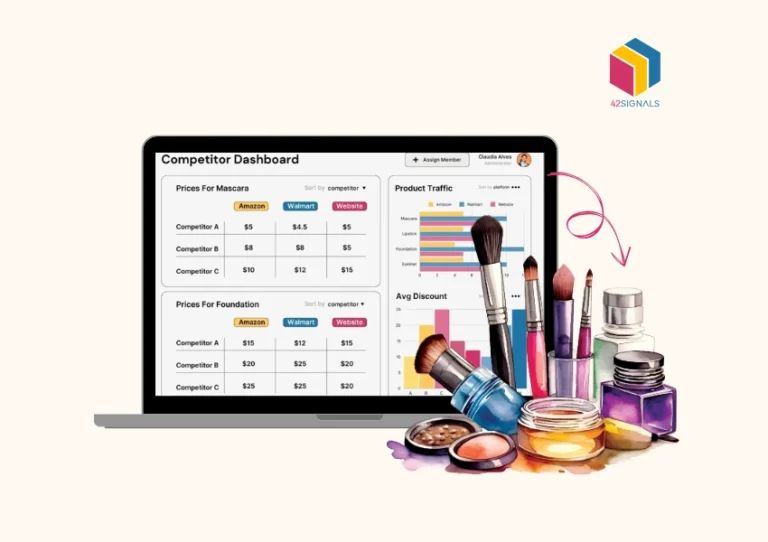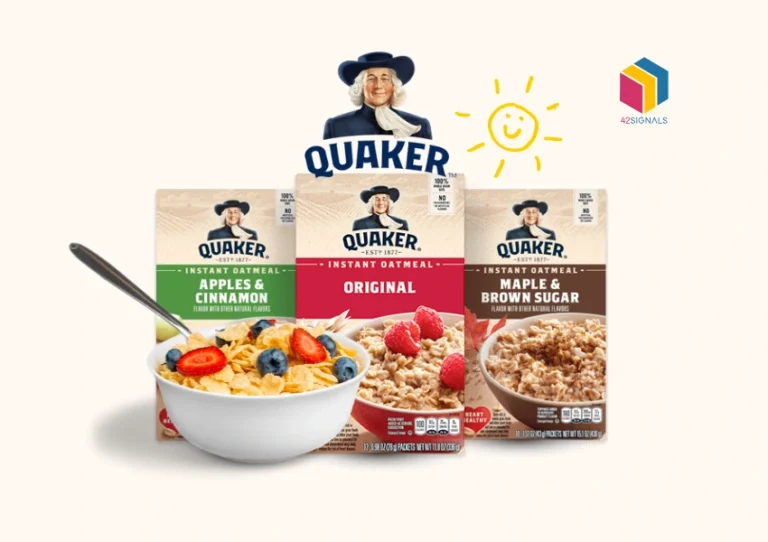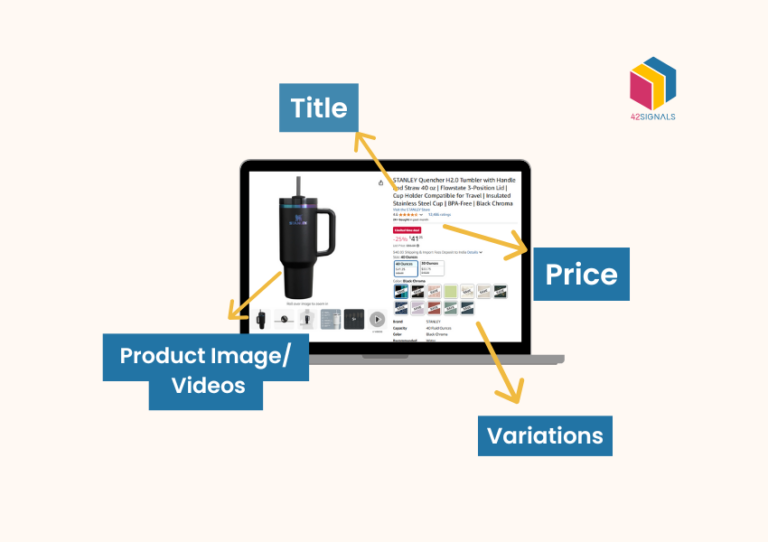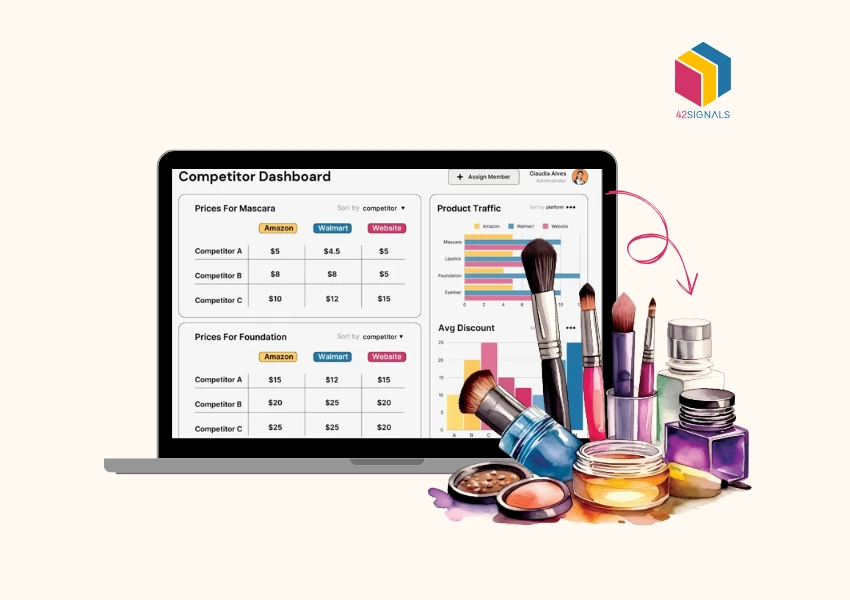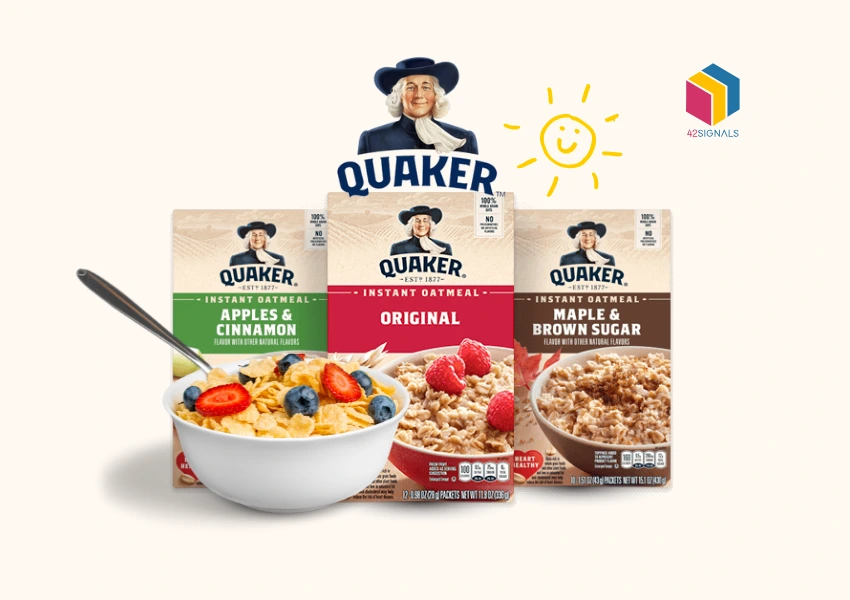The rise of direct-to-consumer brands from beauty to cosmetics and luxury goods to furnishings; is defined by the market movers and shakers. The largest contributor to the eCommerce space is spurred by gen Z and the millennials as they have the highest spending power. By improving and working on engagement, personalization, and consistency; brands can penetrate their e-commerce vertical and grow. In the last few years, we have seen a steady uprise in businesses using big data to discover information and trends about their target audience.
Apps like Instagram and Facebook have seen an explosion of DTC brands creating a space that promotes social shopping for buyers looking to connect with brands that are more transparent. Whereas sales of legacy brands are mostly driven by the Gen Y era, through retail offline channels across the world. Using a tool like 42Signals to get retail insights fits perfectly well with digitally native brands to create thoughtful customer journey mapping and improve customer experience.
Know customers authentically
As we are getting busier than ever with having shorter attention spans on social media or while browsing the internet. So it is important for brands to cater to micro-moments as a sales opportunity. As the data suggests, the movers and shakers of the consumer world have been seeking simple and efficient products that provide purchase control and multiple points of sale. DTC and consumer brands focus on creating solutions and brand story that resonates with the consumer, to improve brand familiarity.
Build a brand community
Social media channels are most commonly used to build engagement and initiate an open dialog with customers. Especially to connect with gen Z and the Millenials who play an active part in upturning the consumer brands. Big data analytics can help you with revenue analysis, online consumer trends, and improving branding. As we can expect, it is most commonly used to fuel sales by analyzing the eCommerce data across websites and through social listening.
Create personalized products
Product relevancy is of utmost crucial for Gen Z and millennials, followed by customer engagement at various touchpoints. Big data helps to get a perspective on the interests and choices of consumers for creating valuable products and features. Monitoring Google trends and eCommerce websites is often a simple method to quantify and qualify online business health and to get ahead of the retail game.
Cater to ideal personas
Gaining consumer behavior data can reveal a lot of information about your ideal customer persona. Most digital marketing activities are revolved around targeting ideal customer profiles and buying habits. Tools like 42Signals help in collecting data about every customer based on their purchasing decisions, why, and when they purchase a product. This data is further processed to generate interactive reports on a nearly real-time basis.
How Gen Z and the Millennials shaping the market
They are the world’s youngest consumers upending market growth and influencing the future of shopping on eCommerce and retail platforms. Most of the gen Zs are born in the internet era and are social media whizzes with adept technical knowledge. Hence these shoppers are omnichannel buyers as they utilize the digital space and resources before making a purchase. Online purchasing models include social shopping networking, checking out the traditional and digital presence of the company, and driving a more holistic approach toward the online shopping experience. But most shoppers from this era are staying loyal to social commerce as it allows them to post relevant recommendations, be more engaging, and provide a personalized shopping experience. It in turn reduces abandoned shopping carts while exploring new websites.
Conclusion
Gen Z and millennials are the people born in the mid-’80s to 2000s, these personas are progressive buyers who carry influence to grow and disrupt the markets. The digital natives fit technology into their lifestyle and are navigators of social media and new technology. As the internet provides tools at our disposal, online shoppers know how to maximize value and show loyalty towards DTC brands. By bringing the brand experience to mobile, the chances of getting identified can increase by 2x and get factored in for consideration.
Most Gen Zers are aware of the impact that businesses can have on the environment as they are brought up to be socially responsible. With the internet at their fingertips, they are willing to solve problems and follow the trends to discuss any challenges or social shopping nuances.

